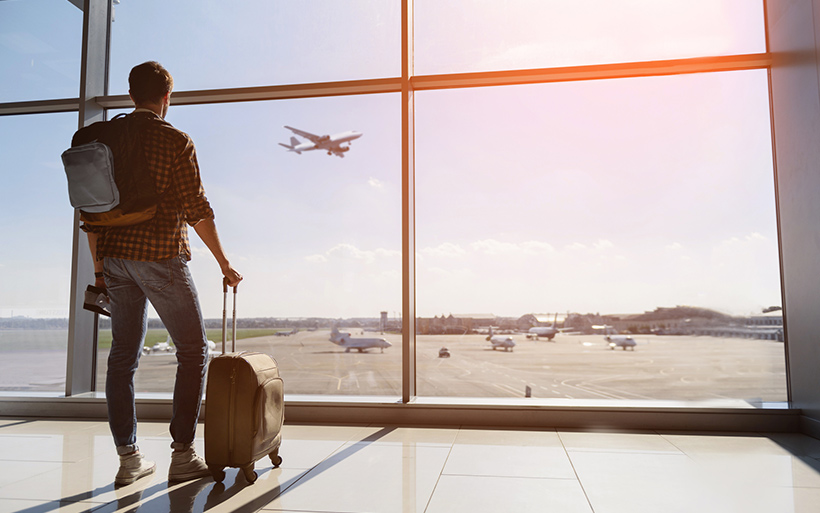If you wear hearing aids, you may be wary of traveling, but there are several steps you can take to prepare for upcoming trips and ensure you have an enjoyable experience.
Traveling by plane
Your instinct may be to remove your hearing aids and put them in your luggage or carry-on bag, but it’s actually easier to get through security checkpoints while wearing them. You should alert the TSA agents that you are wearing hearing aids, and turn down the volume to reduce noise from the airport’s scanners. Wearing your hearing aids will allow you to better hear flight announcements and communicate with airport security personnel. The TSA Cares Hotline at 1-855-787-2227 can answer any questions prior to your trip.
While you are packing for your trip, make sure you have all your equipment, including backup hearing aids, batteries, wax guards, and cleaning tools. Put these items in your carry-on bag along with your medications and any other items you may need during the flight. This preventative measure protects you from losing your equipment if your checked luggage gets lost. Don’t leave any of your assistive listening devices at home, such as FM systems. You can’t use FM systems on the plane, but you will want them when you reach your destination.
Bring a waterproof bag for your hearing aid and equipment, especially if you plan to visit the beach. Sand, as well as the salt in seawater, can destroy your hearing aids. It’s also essential to bag your hearing devices to prevent damage if you are engaging in activities that make you sweat.
The electrical outlets in hotel rooms are often being used by lamps, refrigerators, and your electronic devices, such as laptops, tablets, or phones. Bringing a power strip will make your trip more comfortable by providing electricity for your chargers. If you are traveling overseas, be sure to pack a power converter so you can charge your electronic devices in your destination country.
Traveling by train
If you are traveling by train, make the same preparations for your hearing aid equipment that you would if traveling by air. You should let the train attendant know you are wearing a hearing aid, and ask him or her to inform you about platform changes if you can’t hear announcements in the noisy train station. Take precautions as you near the tracks, as the noise in this area may distract you from seeing incoming trains.
Traveling by car
If you are planning a long road trip, consider purchasing an extra-large rearview mirror that will allow you to clearly see emergency vehicles driving behind you. If you don’t already have one, consider getting an induction loop to help reduce background noise and improve your ability to hear conversations in the car.
Regardless of how you travel with your hearing aids, start by making a checklist of everything you need to make your trip a success. As you put items in your bag, check them off your list. Once you arrive at your destination, you will enjoy the same quality of life your hearing aids and other equipment provide in your home.



